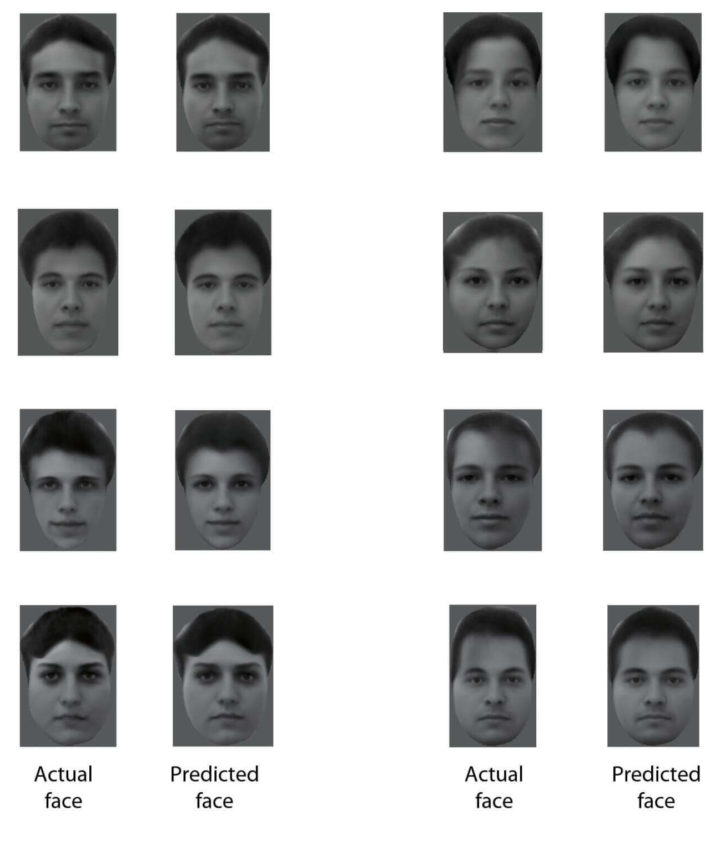Researchers attached electrodes to neurons in monkeys, showed them pictures of faces, and then reconstructed the faces reading brain waves.
After decades of work, scientists at Caltech may have finally cracked our brain’s facial recognition code. Using brain scans and direct neuron recording from macaque monkeys, the team found specialized “face patches” that respond to specific combinations of facial features.
Like dials on a music mixer, each patch is fine-tuned to a particular set of visual information, which then channel together in different combinations to form a holistic representation of every distinctive face.
There are so many ways this could be used irresponsibly, but to be honest, tech-enhanced photographic memory sounds kind of awesome.


